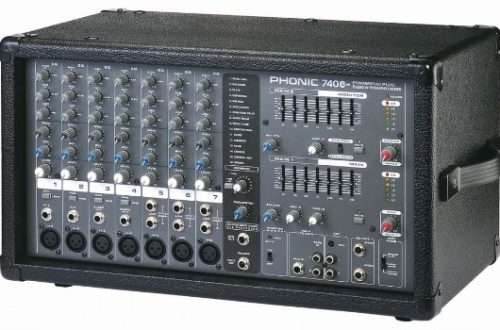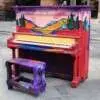
DJ controllers, types and important elements during work
See DJ controllers in the Muzyczny.pl store
Modern DJ controllers are used to professionally play music, mix it and add special effects in real time. These devices work on the MIDI protocol by means of which a signal containing data about the current configuration of the device is sent to the computer. Today, the DJ controller and the laptop with the software are largely one.
What’s the difference between DJ controllers?
We can distinguish some basic differences between DJ controllers. The first distinctive difference that we can observe in the controllers is that some of them have a built-in sound card on board, and some of them do not. Those that are not equipped with such a card must use an external sound source. Such an external sound source can be, for example, an external sound module or other device that has such a card, including a laptop. The second difference that can be found in individual controllers is the type of mixer used. There are controllers that are equipped with a hardware mixer, i.e. one to which we can attach an additional device and use them regardless of the program. And there are controllers where the mixer is software and then we only use midi messages sent between the controller and the software. With this type of mixer, everything happens in the software and we don’t really have the option of connecting an additional audio source. The third difference that we can already see is the number of buttons, sliders and functionality of the supported channels. In the case of software controllers, the more channels and buttons we have on board, the more we can assign specific functions to them, which are offered to us by the software we use.
Basic elements of a DJ controller
Most controllers have a very similar structure. In the central part of our controller there should be a mixer with knobs, among others gain, or equalizer, and sliders for equalizing levels. Next to it, there should be an effector for modeling and creating the sound and special effects. On the other hand, most often on the sides we have players with large jog wheels.
Latency – an important factor in the work of a DJ
Latency is one of the key parameters that you should pay special attention to when using a software controller. This parameter informs us how quickly the message will reach the software on the laptop after pressing the button. The lower the latency, the lower the latency between PC and controller will be. The higher the latency, the greater the delay in sending the message and the quality of our work will deteriorate significantly. The processor we have in our computer or laptop plays a large role in minimizing the delay. With sufficiently fast computer hardware, this latency can be very low and virtually imperceptible. Therefore, it is worth checking carefully what hardware requirements should be met before buying a controller so that we can take full advantage of it.
What to choose, hardware or software
As is usually the case with this type of device, each of them has its pros and cons. In the case of software controllers, all operations actually take place in a computer program. Such a solution is all the more attractive because controller programs often have a much larger number of different types of effects and tools to use. And even if we do not have so many buttons on the panel, we can always connect the ones we like to use the most and re-plug them as needed. However, when we are dealing with a hardware mixer, we can add some external elements to it and the sound can be modified directly from the mixer level.
Summation
Choosing a controller is not the easiest task, especially when you have limited financial resources. The most cost effective solution seems to be the purchase of a software controller and the use of an existing laptop. However, it should be remembered that the laptop must have a fairly powerful processor, especially if you plan to take full advantage of the software. People with a thicker wallet can get a controller with its own sound card that allows direct connection of an amplifier or active monitors. There are many such configurations and solutions, and the price range ranges from several hundred zlotys to several thousand zlotys.





